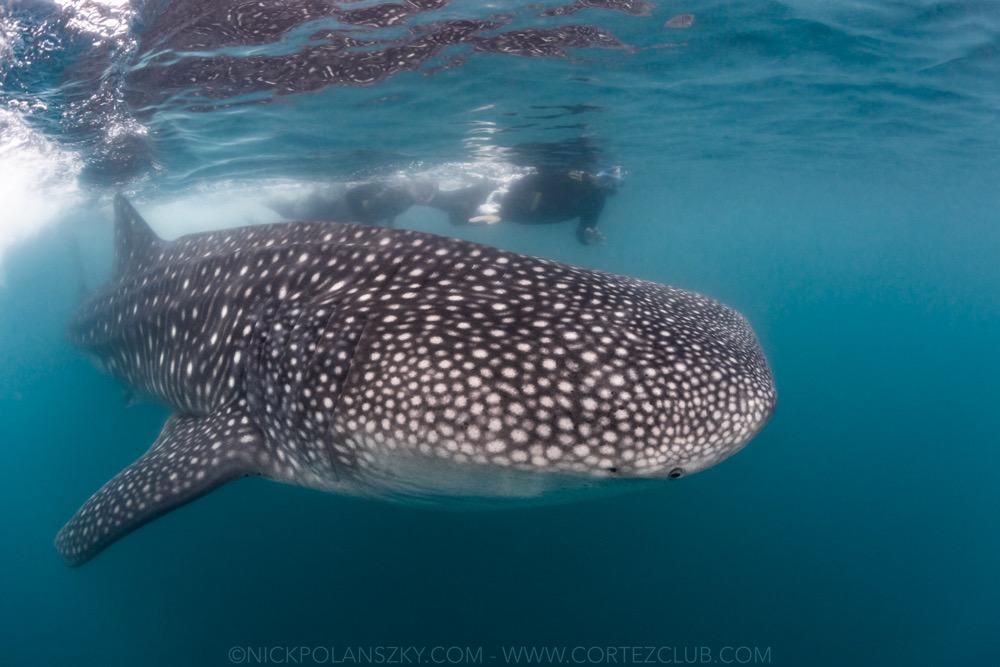Swim with Whale Sharks: A Responsible Snorkeling Guide in La Paz, Mexico & Beyond
Swim with Whale Sharks: A Guide to Responsible Snorkeling
Have you ever dreamed of swimming with the ocean’s largest fish, the whale shark? These majestic giants are an awe-inspiring sight to behold, and places like La Paz, Mexico, offer some of the best opportunities to encounter them up close in the crystal-clear waters of the Sea of Cortez. But while these experiences are extraordinary, they also come with a responsibility — one that’s crucial for both the health of the sharks and the well-being of our oceans.
Whether you’re snorkeling in La Paz or another top destination like the Philippines, Belize, or Thailand, it’s essential to approach whale sharks with respect and care. In this guide, we’ll walk you through the best practices for a safe, responsible, and unforgettable encounter with these gentle giants.
Whale Shark Behavior: What You Should Know
Whale sharks are filter feeders, meaning they swim with their mouths wide open to ingest plankton, krill, and small fish. Despite their immense size — growing up to 40 feet long and weighing as much as 20 tons — these creatures are incredibly peaceful and harmless. They have relatively poor eyesight but are highly sensitive to vibrations in the water, which makes calm and gentle movements essential.
Whale sharks move slowly but may change direction quickly. It’s important to respect their space and allow them to move freely, without disturbing their feeding behavior. In places like La Paz, your guide will help you maintain a safe distance and ensure you follow local regulations that protect these magnificent creatures.
Whale Shark Etiquette: Essential Tips for a Respectful Encounter
✅ Be Patient: Wait for the Green Light
In Mexico, at least 10–12 whale sharks must be present before swimmers are allowed in the water. This regulation ensures that the animals aren’t overwhelmed by large groups, minimizing stress on each individual. The more patient you are, the better the experience will be for everyone — especially the sharks.
✅ Keep Your Hands to Yourself: No Touching
Whale sharks have incredibly sensitive skin, and touching them can harm or distress them. In fact, it’s also illegal under Mexican conservation laws. Always keep your hands to yourself to ensure the health and safety of these magnificent creatures.
✅ Maintain a Safe Distance: Let Them Glide
It’s important to stay at least 3 meters (10 feet) away from the whale shark’s body and 4 meters (13 feet) away from its tail. If a whale shark swims toward you, remain still and let it pass naturally. No need to chase or crowd it — simply enjoy the sight of this incredible animal as it moves peacefully through the water.
✅ Swim Calmly: Glide with the Flow
Whale sharks are slow-moving creatures, and it’s best to match their pace. Avoid splashing or making sudden movements that might startle them. Keep your kicks smooth and gentle, and always be mindful of the animal’s space.
Pro Tip: You may need to swim a little to get into position, but avoid splashing. Whale sharks are highly sensitive to vibrations, and sudden movements can discourage them from approaching. Glide calmly and quietly — that’s the best way to share the water with them.
🌞 Be Sunscreen Smart: Go Reef-Safe or Wear a Rash Guard
Regular sunscreen can be harmful to marine life, so make sure you use reef-safe products. Better yet, skip the sunscreen altogether and wear a rash guard instead to protect both your skin and the ocean.
Important Note: Whale Shark Sightings Are Not Guaranteed
Whale sharks are migratory animals that move around in search of food. While places like La Paz offer one of the best chances to spot these gentle giants, sightings can never be guaranteed. Factors like water temperature, plankton availability, and ocean currents play a role in where the whale sharks will be at any given time. Patience is essential, and respecting the environment and the creatures is always the most important part of the experience.
What to Expect During Your Whale Shark Encounter
Swimming with whale sharks is a once-in-a-lifetime experience, but it’s important to manage your expectations. The water is often full of plankton, which makes visibility less than perfect. You might not always see the shark coming, but when it does appear through the plankton haze, it’s a breathtaking moment.
Your snorkel may last anywhere from 15 to 30 minutes, depending on the number of whale sharks and how many people are in the group. Each encounter is unique, and you may find yourself swimming with the sharks for a longer or shorter time. The beauty of wildlife encounters is that no two experiences are the same.
💬 A Personal Note from the Water
I’ve snorkeled with whale sharks twice in Mexico, and I can tell you, it’s absolutely worth it. But it can also be overwhelming at first — there’s excitement, splashing, and the adrenaline rush of being so close to these majestic creatures. Everyone is eager to get pictures and videos, but I always recommend a different approach:
Take one pass without a camera. No GoPro, no phone — just you and the whale shark.
That first pass will let you truly absorb the beauty of the moment: the way the shark glides through the water, the peaceful silence of the sea, and how small and humble you feel in its presence. It’s a moment you’ll remember much more vividly than any picture could capture.
Who You Snorkel With Matters
When choosing a whale shark tour, it’s important to choose operators who follow ethical practices and conservation regulations. Not all tours are created equal, and that’s why we work only with ethical, licensed operators who are dedicated to ocean conservation. They limit group sizes, rotate time in the water, and always prioritize the well-being of the whale sharks.
As much as we want you to experience these incredible animals, we also want to ensure that future generations will have the chance to do the same.
✨ Make the Moment Count
Swimming with whale sharks is a rare, life-changing experience — a reminder of how vast, wild, and awe-inspiring the ocean is. But with that awe comes responsibility. By respecting these animals and choosing ethical operators who do the same, we can help protect them for the future.
If swimming with whale sharks is on your bucket list, we’d love to show you how beautiful and meaningful it can be when done the right way.
👉 Want to join us in Baja for peak whale shark season? Drop us a message or check out our upcoming trip to the Sea of Cortez. Limited spots available for this unforgettable adventure! 🐋💙


